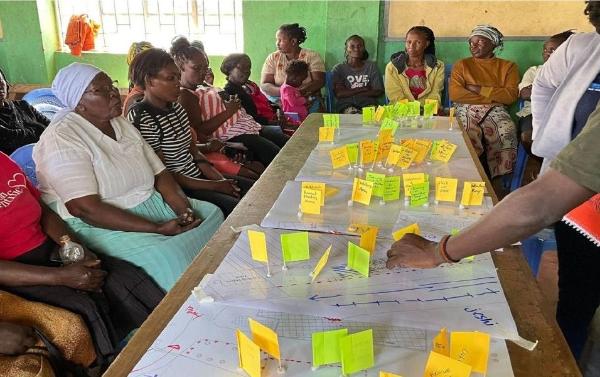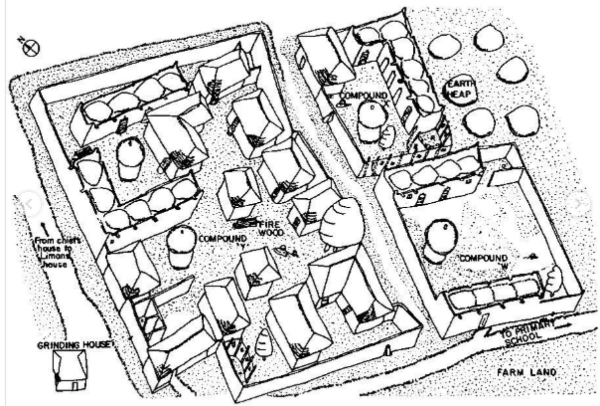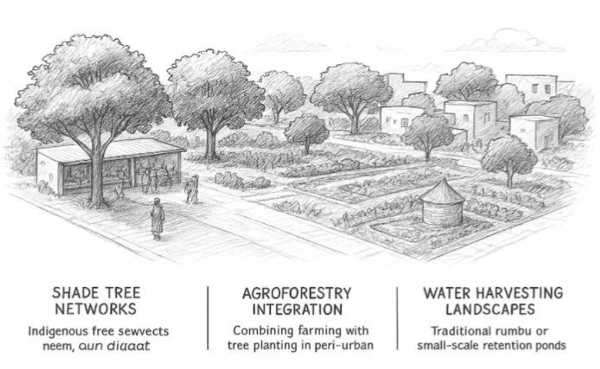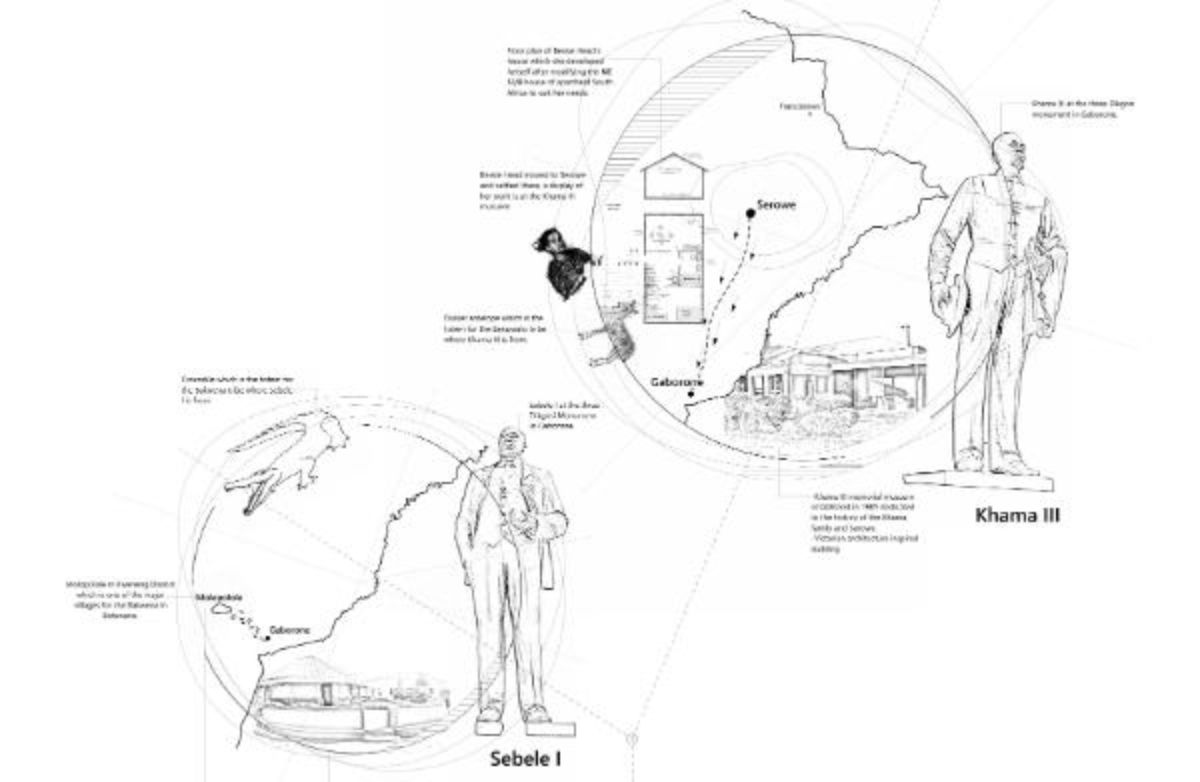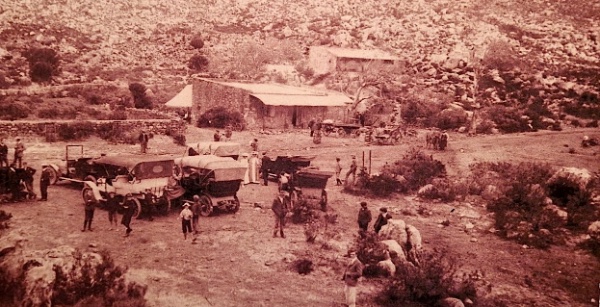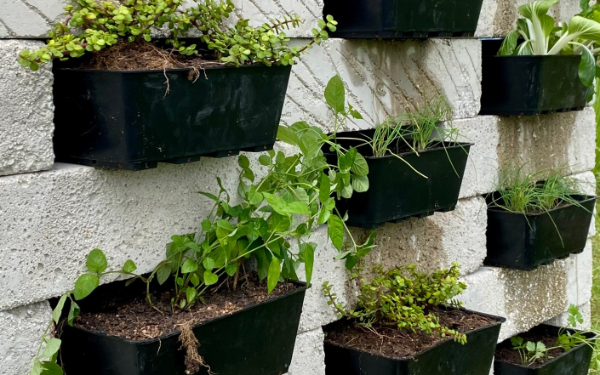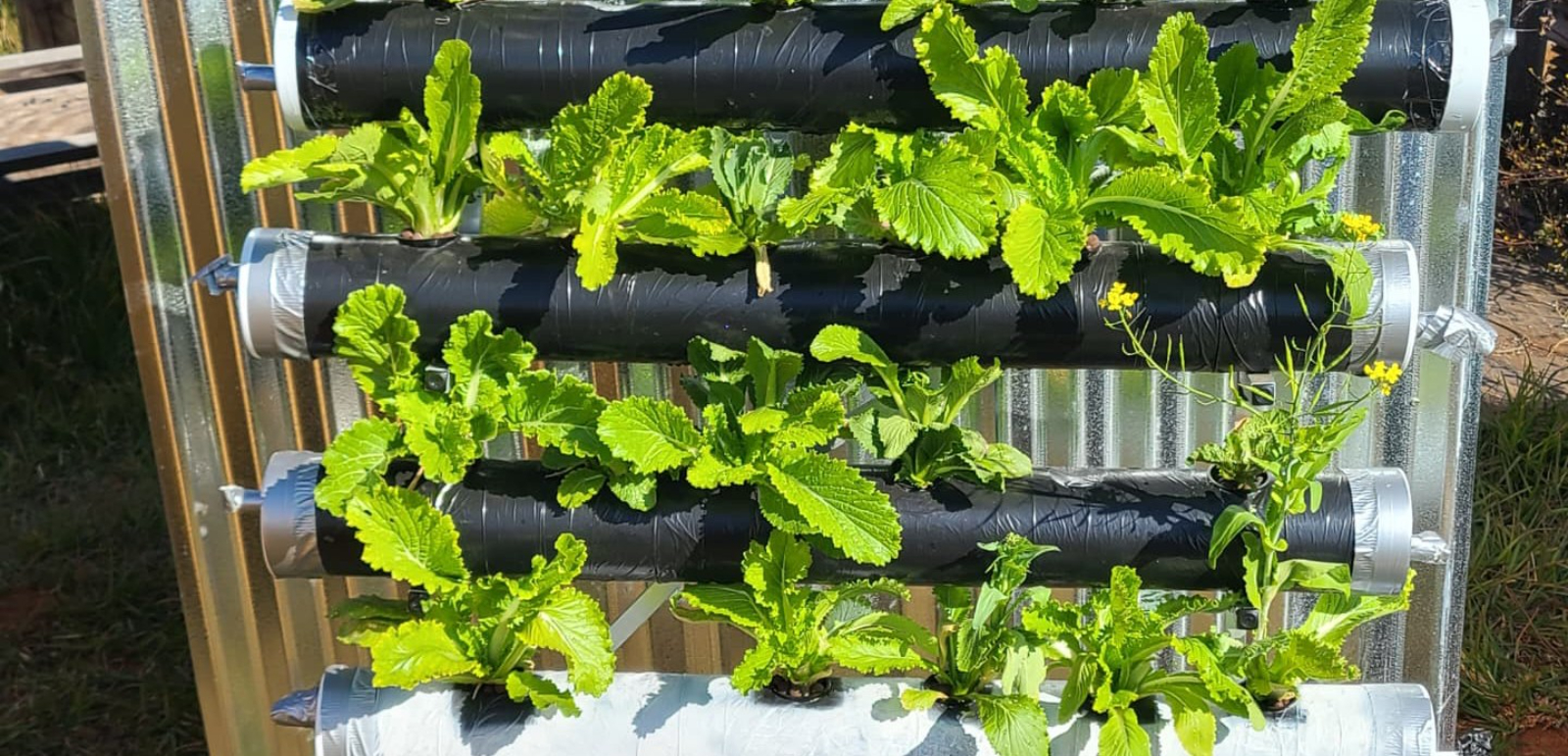
Exploring living walls to address food security and heat stress in informal settlements
Les défis mondiaux liés ausystème alimentaire, exacerbés par le changement climatique, l'urbanisation etla diminution de l'accès aux terres arables, nécessitent des solutionsagricoles innovantes et peu encombrantes. Conformément aux objectifs dedéveloppement durable des Nations unies, l'agriculture urbaine peut améliorerla sécurité alimentaire, la résilience climatique et la diversité alimentairedans les quartiers informels à l'espace limité d'Afrique subsaharienne.
Les défis mondiaux liés ausystème alimentaire, exacerbés par le changement climatique, l'urbanisation etla diminution de l'accès aux terres arables, nécessitent des solutionsagricoles innovantes et peu encombrantes. Conformément aux objectifs de développementdurable des Nations unies, l'agriculture urbaine peut améliorer la sécuritéalimentaire, la résilience climatique et la diversité alimentaire dans lesquartiers informels à espace restreint d'Afrique subsaharienne. Cette étude detrois mois menée à Tshwane, en Afrique du Sud, compare les performances dequatre légumes-feuilles africains et de quatre légumes courants dans dessystèmes modulaires de murs végétaux extérieurs afin d'améliorer la sécuritéalimentaire. Elle compare également les performances des cultures orientéesvers le nord et vers l'ouest, ainsi que celles des systèmes hydroponiques etdes systèmes basés sur le sol, afin de lutter contre le stress thermique àl'intérieur des habitations informelles. Les chercheurs ont mesuré les rendementsde biomasse foliaire fraîche à l'aide d'une balance de laboratoire calibrée etont utilisé un fluorimètre pour évaluer le rendement quantique maximal duphotosystème II (Fv/Fm) comme indicateur du stress des plantes. Les données ontété analysées statistiquement.
Les résultats indiquent que siles légumes courants ont une efficacité photosynthétique légèrement supérieure(Fv/Fm), les légumes africains produisent une biomasse nettement plusimportante. Bien que l'orientation n'ait pas d'incidence significative sur lesrendements en biomasse, les cultures dans les systèmes orientés vers l'ouestprésentent des niveaux de stress plus faibles, ce qui indique de meilleuresperformances dans ces orientations dans les pays du Sud. Les systèmeshydroponiques offrent une meilleure régulation thermique que les systèmes baséssur le sol pour les habitations informelles. Cependant, l'utilisation desystèmes hydroponiques LWS dans des environnements soumis à un stress hydriquepeut poser des défis en matière de durabilité à long terme. Ces résultatssoulignent le potentiel des légumes-feuilles africains combinés à des systèmesde murs végétaux à faible technologie pour lutter contre l'insécuritéalimentaire et le stress thermique dans les communautés vulnérables.
Global food system challenges, intensified by climate change, urbanisation and declining access to arable land, require innovative space-efficient agricultural solutions. Aligned with the UN Sustainable Development Goals, urban agriculture can improve food security, climate resilience and dietary diversity in space-constrained informal settlements in sub-Saharan Africa. This three-month study in Tshwane, South Africa, compares the performance of four leafy African vegetables and four mainstream vegetables in outdoor modular living wall systems. It also compares crop performance on North versus West orientations and soil-based versus hydroponic systems to address indoor heat stress in informal dwellings. Researchers measured fresh leaf biomass yields with a calibrated laboratory balance and used a fluorometer to assess maximum quantum yield of photosystem II (Fv/Fm) as an indicator of plant stress. Data were analysed statistically. The results indicate that while mainstream vegetables have slightly higher photosynthetic efficiency (Fv/Fm), African vegetables yield significantly more biomass. Although orientation does not significantly affect biomass yields, crops in west-facing systems show lower stress levels, indicating better performance in such orientations in the Global South. Hydroponic systems provide better thermal regulation than soil-based systems for informal dwellings. However, using hydroponic LWSs in water-stressed environments may pose long-term sustainability challenges. These findings highlight the potential of African leafy vegetables combined with low technology living wall systems to combat food insecurity and heat stress in vulnerable communities.
Introduction and Background
Innovative forms of urban agriculture are redefining how cities can tackle food insecurity and environmental stress, particularly through the integration of nutrient-dense, culturally significant crops like leafy African vegetables (Avs) into the built environment (Schreinemachers, Simmons & Wopereis, 2018; Zonneveld, 2020).
While existing market and distribution systems support conventional vegetables, AVs offer a more resilient and locally adapted alternative for African communities.
They provide superior nutritional value, better tolerance to climate stress, and the potential to strengthen local food systems (Maseko et al., 2017; Zonneveld, 2020).
By integrating these crops into living walls, we can unlock significant benefits for food and nutrition security, along with co-benefits such as cooling and increased biodiversity. This article presents the initial findings of a study on the effectiveness, resilience, and co-benefits of using AV living walls as a retrofit strategy for informal settlements in southern Africa. Building on Botes (2024), this research explores the use of leafy AVs in outdoor modular living wall systems (LWSs) as a response to the urgent need for space-efficient food production strategies, particularly in the context of persistent household food insecurity in sub-Saharan African informal settlements. In South Africa, approximately 2.1 million households (11.6%) currently lack reliable access to adequate and nutritious food (Nengovhela, Mokhaukhau & Hlongwane, 2024). These challenges are further exacerbated by rapid urbanisation, poverty, and climate change (Titz & Chiotha, 2019; John, 2024). Finding alternative strategies to introduce alternative food sources in cities is vital.
Beyond food security, this study also explores the co-benefits of edible LWSs as green infrastructure (EGI), particularly their capacity to mitigate urban heat stress, an emerging threat in informal settlements (Satterthwaite et al., 2020). Given climate change's intensification of urban heat island effects and food insecurity, the multifunctionality of edible green infrastructure is increasingly vital. (FAO et al., 2018; Kafle, Hopeward & Myers, 2022).
Urban agriculture is increasingly recognised for its significant role in improving food security and promoting diverse diets (Zezza & Tasciotti, 2010). However, its full potential remains untapped due to a lack of integration into urban planning (Specht et al., 2013). A promising solution lies in AVs, which are noted for their resilience and high nutritional value, making them ideal for crop diversification (Mabhaudhi et al., 2018; Botes & Breed, 2022). Furthermore, modular living wall systems are highly versatile and multifunctional (Manso & Castro-Gomes, 2014; Collins et al., 2017). Despite these benefits, research on AVs, particularly within the context of living wall systems and their optimal orientation, is still lacking (Auslander et al., 2003; Dubravka & Ilin, 2022).
Building on urban agriculture, recent research highlights the significant thermal benefits of LWSs in reducing heat stress (Perini & Rosasco, 2013; Perez et al., 2018). Their effectiveness in improving thermal performance results from a three-fold action: shading, evapotranspiration and insulation, as highlighted in studies conducted in the Global South, which have demonstrated these effects. For instance, Akinwolemiwa et al. (2018) recorded indoor air temperature reductions of up to 2.3°C, while Gouws & Gouws (2022) noted their insulating qualities in Gqeberha, South Africa. As Manouchehri et al. (2024) found, the performance of LWSs is also influenced by specific design factors, including plant density, orientation, and substrate type. Despite this promising evidence, LWSs in South Africa are primarily used for aesthetic or botanical purposes. This highlights a critical knowledge gap regarding their potential application in resource-constrained urban environments, which warrants dedicated inquiry.
This article reports on the preliminary findings from a multi-method study which assessed:
i) crop performance and system efficiency, specifically fresh biomass production (grams) and plant stress (maximum quantum yield of photosystem II [Fv/Fm]),
ii) the impact of orientation on crop performance and
iii) thermal comfort as co-benefit of using such living wall systems to lower heat stress exposure.
It contributes to the growing discourse on sustainable urban agriculture and building-integrated edible green infrastructure as a multifunctional strategy for resilient, inclusive and climate-responsive informal urban environments in southern Africa.
Research method discussion
This study adopts a pragmatic approach with a positivist bias to evaluate the performance of producing AV in outdoor modular living walls for household food security and combating indoor heat stress in Sub-Saharan African informal dwellings. The findings are based on measurements from a field experiment and a series of physical simulation studies conducted at the University of Pretoria's Experimental Farm in Tshwane, South Africa. The test site is located in an area with a Köppen–Geiger Cwa climate, which is defined by warm, temperate conditions with dry winters and hot summers (Conradie, 2012).
The study was conducted at the University of Pretoria's Experimental Farm, using two identical 2000 x 2000 mm structures constructed from corrugated metal sheets to simulate typical informal settlement conditions (Figure 1).
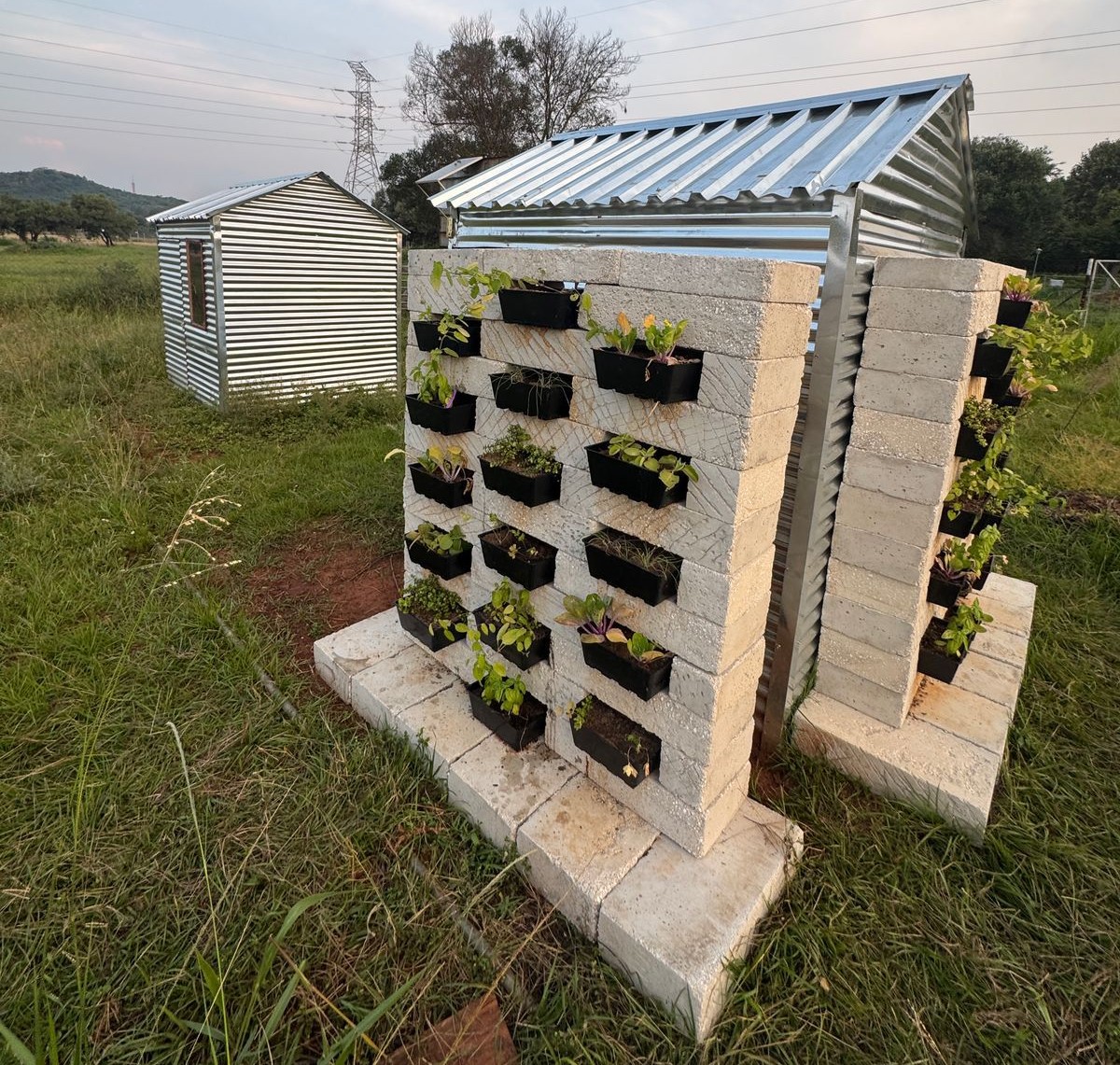
One structure served as the test subject and was fitted with a modular living wall on its north and west-facing orientations. These walls were planted with randomised samples of African and mainstream vegetables, comprising four vegetables each (Figure 2).
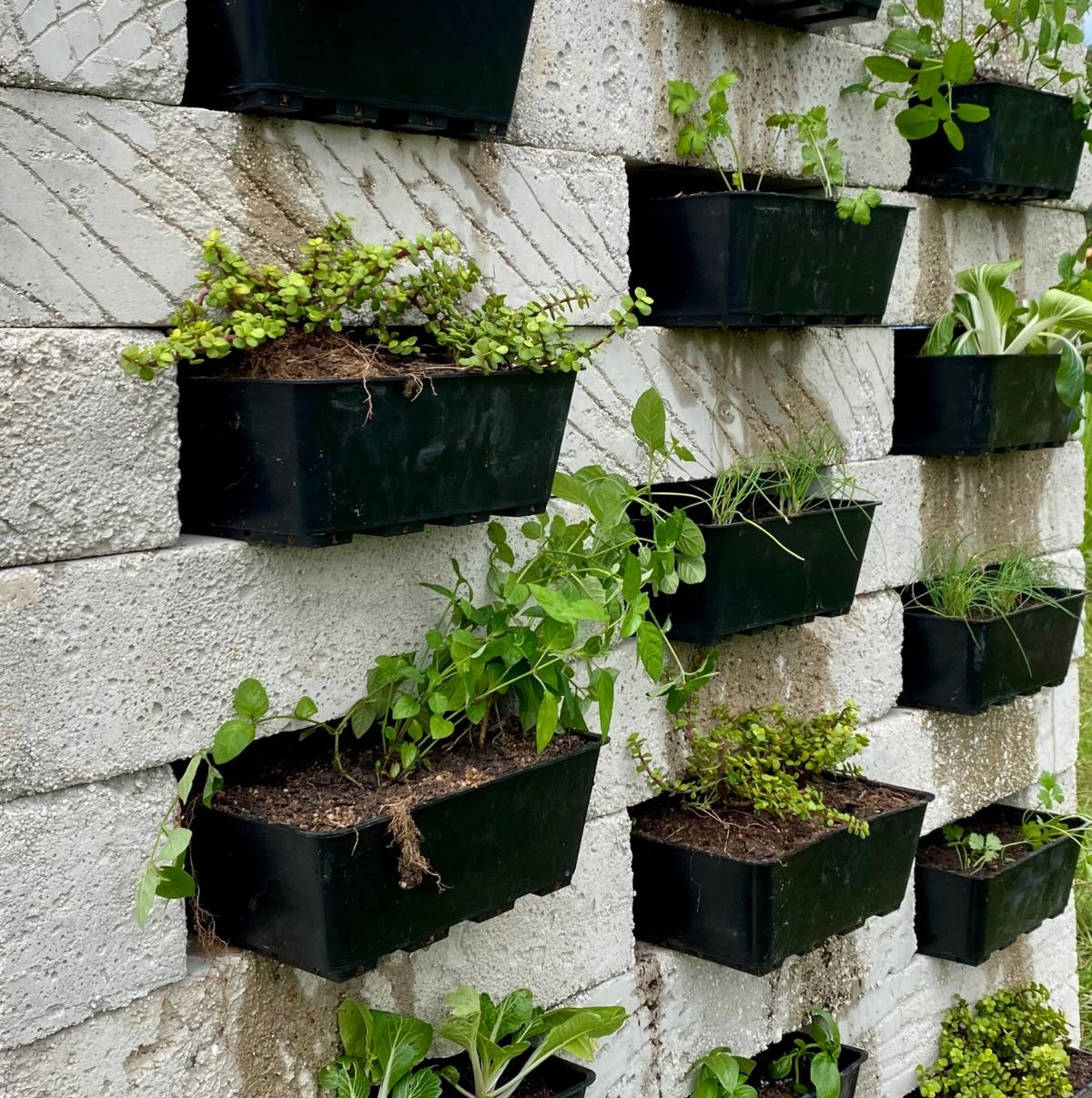
The African vegetables included Indian borage (Coleus amboinicus), dwarf elephant's food (Portulacaria afra prostrata), purslane (Portulaca oleracea), and creeping foxglove (Asystasia gangetica). The mainstream vegetables were basil (Ocimum basilicum), bok choy (Brassica rapa subsp. chinensis), parsley (Petroselinum crispum), and chives (Allium schoenoprasum). Plant stress was monitored bi-weekly, while fresh biomass yields were measured bi-monthly.
The researchers used a non-parametric one-way Analysis of Variance (ANOVA), which is a statistical method for comparing results from independent samples, to analyse variations in plant performance among different species and wall orientations. Following the ANOVA, Tukey's post-hoc tests were conducted. This statistical test is specifically designed to compare specific pairs following an ANOVA test to determine whether there is a significant difference.
Two types of data loggers were used to measure and compare the thermal performance of hydroponic and soil-based living walls. The first entailed an AZ Portable WBGT logger, which is a handheld, battery-powered device used to measure the Wet Bulb Globe Temperature (WBGT). This is the most widely recognised standard for assessing heat stress risk in hot environments, measuring ambient temperature (TA) and relative humidity (RH). Concurrently, Huato S220-T8 thermocouple data loggers collected air and surface temperatures at five-minute intervals. The data was collected every 7-10 days.
Heat stress was evaluated using a descriptive statistical analysis of the collected thermal data (Figure 3). Key variables such as ambient temperature, surface temperature, and relative humidity were analysed. The diurnal temperature range and Apparent Temperature were also calculated. Apparent Temperature is a crucial heat stress indicator in South Africa, as it quantifies the perceived heat by integrating ambient temperature, relative humidity, and wind speed (Hugo, 2023; Steadman, 1994; Australian Government Bureau of Meteorology, 2010).
This study was conducted in accordance with the ethical standards and principles of the University of Pretoria. Ethical approval was granted for the experimental activities at the University’s Experimental Farm under the reference number EBIT/272/2022.
Preliminary Findings
From the study, preliminary results regarding the performance of African vegetables in living walls, as well as the co-benefits of such living walls to improve the indoor comfort in informal settlement dwellings, are reported.
Key findings on the performance of leafy African Vegetables in outdoor modular living walls
The study's principal findings highlight the superior performance of African Vegetables (AVs) in modular living walls.
Leafy AVs produced substantially higher fresh biomass yields than mainstream vegetables, despite having slightly lower photosynthetic efficiency (Fv/Fm). Specifically, crops such as Indian borage (Coleus amboinicus) and dwarf elephant's food (Portulacaria afra prostrata) consistently outperformed other plants, proving their adaptability and productivity in these systems. In contrast, mainstream vegetables like parsley, chives, and bok choy yielded significantly less and sometimes failed to produce any measurable biomass.
Moreover, the study found that north versus west wall orientation did not have a statistically significant effect on photosynthetic performance or fresh biomass yields. While the western orientation showed slightly higher yields, the difference was not significant enough to be a critical factor for success. Instead, crop selection and seasonal factors were the main drivers of productivity, underlining the resilience of certain AVs in various microclimatic conditions.
Additionally, seasonal variation was a crucial factor, with yields peaking in March and then declining in April and May. This temporal trend suggests that environmental factors like temperature and day length had a greater impact on productivity than wall orientation. These findings demonstrate that integrating AVs into modular living wall systems can strengthen household food security. These resilient, high-yielding crops are better suited to informal settlements' resource- and space-constrained environments.
Key Findings on the Thermal Performance of Living Wall Systems with African leafy vegetables
The study's findings confirm that hydroponic (Figure 4) and soil-based (Figure 5) LWSs with AVs offer significant thermal regulation benefits.
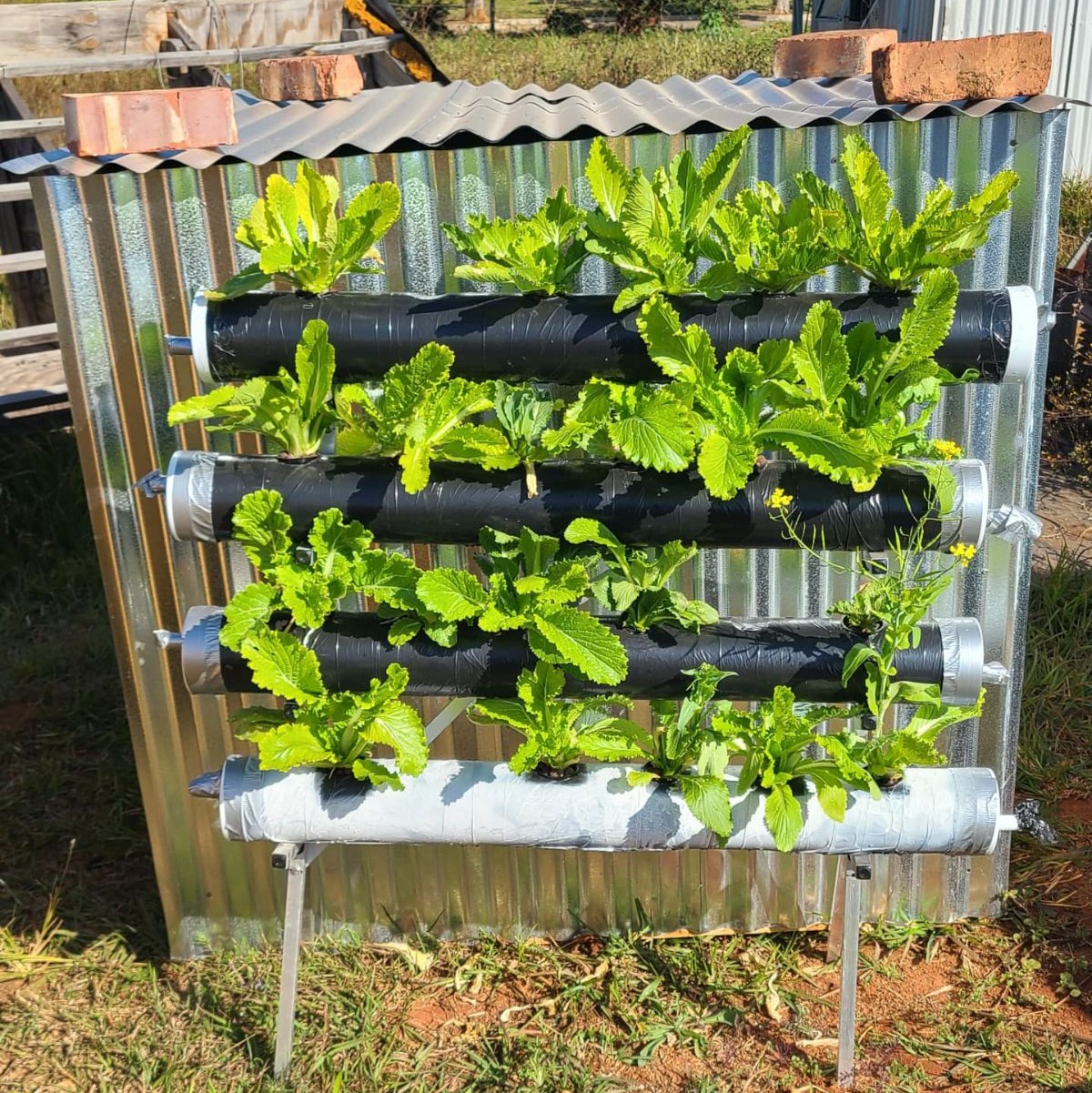

Thermal Control and Stability
Both systems measurably improved indoor conditions compared to the control prototype. They consistently lowered both surface and indoor ambient temperatures. The hydroponic LWSs were particularly effective, achieving the greatest stability. It reduced maximum surface heat gains by over 8°C and delayed peak indoor temperatures by several hours, demonstrating the system's ability to create a significant thermal lag through shading, evapotranspiration, and substrate mass.
Reducing Diurnal Fluctuations
The LWSs also narrowed the diurnal temperature range, leading to more stable indoor environments. Hydroponic walls reduced maximum indoor temperatures by up to 10.7%, while soil-based systems achieved a comparable 10.1% reduction. Analysis of Apparent Temperature confirmed these benefits, showing that both systems successfully lowered the perceived heat stress inside the dwellings. The soil-based wall had slightly lower apparent temperatures, but the hydroponic system showed greater daily consistency, indicating a more reliable performance under fluctuating conditions.
Plant Health and System Resilience
The study followed a highly constrained water provisioning regime simulating resource-constrained informal settlement conditions. Crops in the hydroponic system showed a higher average (Fv/Fm = 0.785) compared to the soil-based system (Fv/Fm = 0.666), suggesting that plants in the hydroponic system experienced better plant health with limited water availability. The soil-based system showed visible signs of stress, like yellowing and leaf shedding during water-limited periods. These results suggest that while both LWSs types provide thermal benefits, hydroponic walls (non-recirculating hydroponic systems) may be more water efficient and therefore show potential for sustaining edible crops, reinforcing their dual role in heat mitigation and food security. However, other factors such as setup costs, energy usage and technical expertise should be considered for application in vulnerable communities with limited skills, resources and financial resources and suggest further research needs.
Discussion and Conclusion
This study demonstrates the transformative potential of integrating African Vegetables (AVs) into modular living wall systems (Figure 6).

This approach provides a space-saving, scalable and climate-resilient strategy for enhancing food security, thermal comfort, and biodiversity in dense urban settlements. By providing comparative data on plant stress, fresh biomass yield, and thermal performance, this research offers valuable insights into the viability of low-technology, edible green infrastructure within resource-constrained environments, especially when using African leafy vegetables. African leafy vegetables, especially Indian borage (Coleus amboinicus) and dwarf elephant’s food (Portulacaria afra prostrata), outperformed mainstream vegetables in both yield and adaptability, confirming their suitability for the local climate conditions and informal urban contexts with constrained resources such as electricity and water. Furthermore, both hydroponic and soil-based systems were shown to contribute to indoor temperature regulation, underscoring their multifunctional role in mitigating urban heat stress in addition to food security. Based on the different advantages of modular soil-based and hydroponic systems, further studies on their application for resource-restricted informal communities are recommended. The findings are highly relevant to practice and the built environment in Sub-Saharan Africa.
While acknowledging site-specific limitations, this study provides a crucial foundation for future applied research and policy frameworks. It advocates for prioritising culturally relevant, nutrient-dense crops within sustainable urban agriculture systems. By bridging agronomic performance with socio-environmental benefits, this research advances the discourse on inclusive, context-sensitive approaches to urban food system transformation in sub-Saharan Africa.
References
Akinwolemiwa, O. H., Bleil De Souza, C., De Luca, L. M. & Gwilliam, J. 2018. Building community-driven vertical greening systems for people living on less than £1 a day: A case study in Nigeria. Building and Environment, 131: 277–287.
Auslander, M. & Inbar, M. (2003). The effects of slope orientation on plant growth, developmental instability and susceptibility to herbivores. Journal of Arid Environments 55(3): 405–416.
Botes, K. L. 2024. The Performance of African vegetables in urban outdoor modular living wall systems for food security in Gauteng, South Africa. University of Pretoria.
Botes, K. L. & Breed, C. A. 2022. African vegetables in modular living walls: a novel approach towards smart cities. IOP Conference Series: Earth and Environmental Science, 1101, 022051
Collins, R., Schaafsma, M. & Hudson, M. D. 2017. The value of green walls to urban biodiversity. Land Use Policy, 64, 114-123.
Conradie, D. 2018. Sun, shade and natural daylight in South African town planning, with emphasis on Pretoria. Town and Regional Planning, 73:47-67.
Dubravka, S. & Ilin, Z. 2022. Advantages of Growing Vegetable Crops in Modern Greenhouses, In Vegetable Crops – Health Benefits and Cultivation (Working Title). DOI: 10.5772/intechopen.101469.
FAO, IFAD, UNICEF, WFP & WHO. 2018. The State of Food Security and Nutrition in the World 2018. Building climate resilience for food security and nutrition. Rome, FAO.
Gouws, S. & Gouws, M. 2022. Thermally regulated green living wall. South African Journal of Chemistry. 76: 91–96.
John, I. 2024. Indigenous or Exotic Crop Diversity? Which Crops Ensure Household Food Security: Facts from Tanzania Panel. Sustainability, 16(9):1-14.
Kafle, A., Hopeward, J. & Myers, B. 2022. Modelling the Benefits and Impacts of Urban Agriculture: Employment, Economy of Scale and Carbon Dioxide Emissions. Horticulturae, 9(1):1-26.
Mabhaudi, T., Chibarabada, T. P., Chimonyo, V. G. P., Murugani, V. G., Pereira, L. M., Sobratee, N., Govender, L., Slowtow, R. & Modi, A. T. 2018. Mainstreaming Underutilized Indigenous and Crops into Food Systems: A South African Perspective. Sustainability, 11:1-22.
Manouchehri, M., Santiago López, J. & Valiente López, M. 2024. Sustainable Design of Vertical Greenery Systems: A Comprehensive Framework. Sustainability. 16(8):3249.
Manso, M. & Castro-Gomes J. 2014. Green wall systems: A review of their characteristics. Renewable and Sustainable Energy Reviews, 41:863-871.
Maseko, I., Mabhaudhi, T., Tesfay, S., Araya, H. T., Fezzehazion, M. & du Plooy, C. P. 2017. African Leafy Vegetables: A Review of Status, Production and Utilization in South Africa, Sustainability, 10(1): 1-16.
Nengovhela, R., Mokhaukhau, J. P. & Hlongwane, J. J. 2024. Overview of food security status at a household level in the Limpopo Province. In: Marc, I. R. A., Muresan, C. C. & Postolache, A. N. (eds.) Worldwide Megatrends in Food Safety and Food Security. IntechOpen, England, UK
Pérez, G., Coma, J. & Cabeza, L. F. 2018. ‘Vertical Greening Systems to Enhance the Thermal Performance of Buildings and Outdoor Comfort.’ In: Nature Based Strategies for Urban and Building Sustainability. Oxford, UK. Elsevier, 99–108.
Perini, K. & Rosasco, P. 2013. Cost–benefit analysis for green façades and living wall systems. Building and Environment, 70:110–121.
Schreinemachers, P., Simmons, E. B. & Wopereis, M. 2018. Tapping the economic and nutritional power of vegetables. Global Food Security, 16 (2018): 36-45.
Specht, K., Siebert, R., Hartmann, I., Freisinger, U. B., Sawicka, M., Werner, A., Thomaier, S., Henckel, D. & Dierich, A. 2013. Urban agriculture of the future: an overview of sustainability aspects of food production in and on buildings. Agriculture and Human Values, 31: 33-51.
Titz, A. & Chiotha, S. 2019. Pathways for Sustainable and Inclusive Cities in Southern and Eastern Africa through Urban Green Infrastructure. Sustainability, 11(10):1-27
Zezza, A. & Tasciotti, L. 2010. Urban agriculture, poverty, and food security: Empirical evidence from a sample of developing countries. Elsevier, 35(4):265-273.
Zonneveld, M. 2020. Diversity and conservation of African vegetables: Priorities for action. Diversity and Distributions, 27(1): 1-17.







